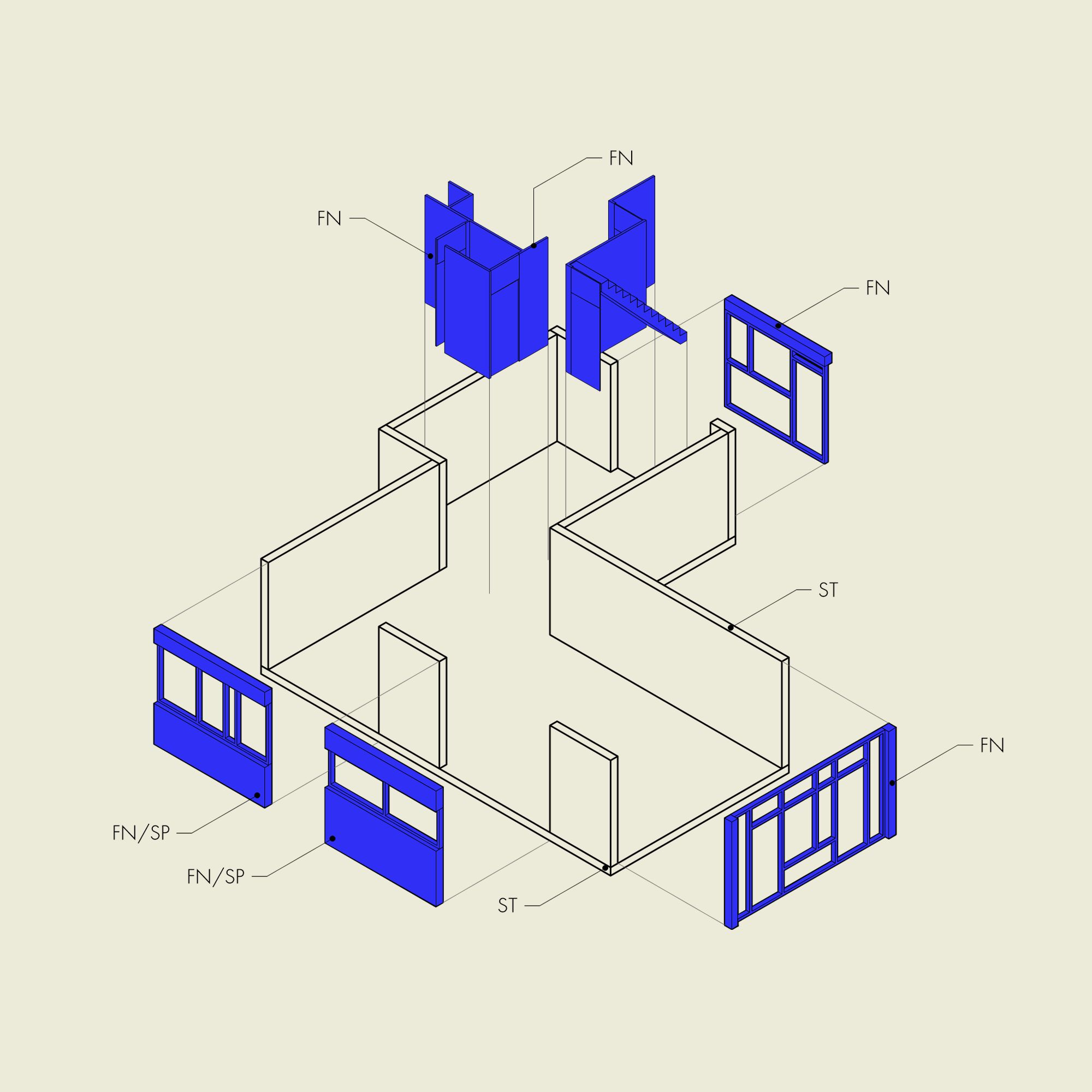Julian Puszcz

Owning without Owning
To make a space a home, we need to individualise it. As so often in life, the more money we have, the easier it is: With enough financial resources, we can tailor our own property exactly to our liking. Making changes is often impossible without these resources, especially in large-scale mass housing projects.
Architectural theorists already recognised this problem in the mid-20th century, like N. John Habraken, whose mission was to create more human-centred, adaptable, and sustainable living environments by involving users in the design process and challenging conventional approaches to housing.

To put Habraken’s theory into practice, as it was executed for example in the Molenvliet project by Frans van der Werf near Rotterdam, a requirement is that the residents own modifiable parts of the building, which turned out to not be practicable in reality.
But how can we make this work, if we are limited to renting? How can we make a space our own without owning it?
My research approaches this topic from our personal items, as they reflect our identity as a person, and serve as vessels to project this identity into a space. The outcome is a spatial system consisting of five containers, aiming to portray the personal items as the protagonists in the room while allowing users to arrange the system according to their specific functional requirements.
Deze pagina is voor het laatst gewijzigd op 7 mei 2024
Sta jij op deze pagina? En heb je een opmerking? Mail naar de redactie.